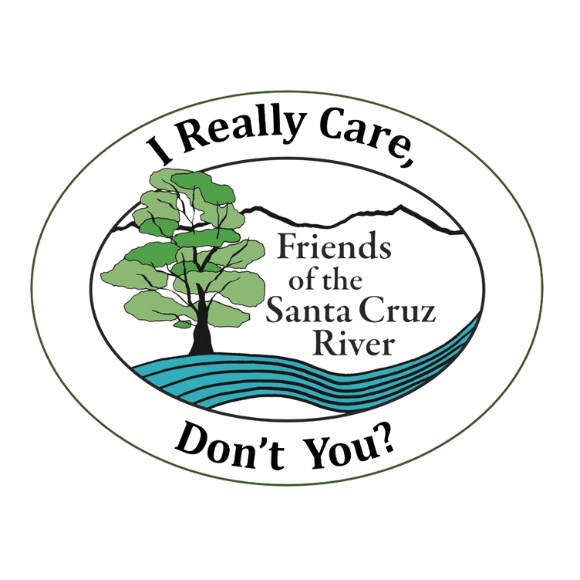[et_pb_section][et_pb_row][et_pb_column type=”4_4″][et_pb_image admin_label=”Image” show_in_lightbox=”off” url_new_window=”off” animation=”off” sticky=”on” src=”https://friendsofsantacruzriver.org/wp-content/uploads/2014/10/River-Needs-Water.jpg” alt=”A River Needs Water” title_text=”A River Needs Water” /][et_pb_text admin_label=”Text” background_layout=”light” text_orientation=”right”]
Photo by Cynthia Shoemaker
[/et_pb_text][et_pb_text admin_label=”Text” background_layout=”light” text_orientation=”left”]
A River Needs Water
In the 1990s, four native fish species, including the federally endangered Gila topminnow, lived in the upper U.S. portion of the Santa Cruz River.
Surface flow extended from the southern part of Rio Rico through Tubac in Santa Cruz County, a distance of over 13 miles.
At that time, our RiverWatch (water quality monitoring program—
learn more at our Ongoing Events page) control site was at Guevavi east of Nogales, where surface water flowed often enough for us to sample at that location—upstream of the treatment plant discharge in Rio Rico—at least every few months.
The amount of surface flow we measured at our downstream Santa Gertrudis sampling site was consistently greater than at the upstream Rio Rico site, which meant that that section of the river was a “gaining” reach: shallow groundwater was leaking out of the ground, adding to the surface flow.
But by 2014, only one fish species remained in the river, and reliable surface flow had receded to less than 10 miles. The hydrology of the river itself had reversed: now the Rio Rico-Santa Gertrudis reach was losing flow, not gaining. There has been no surface flow at the Guevavi site (except during monsoon rains, and then only rarely, for brief periods) for over a decade.
The Upper Santa Cruz River’s aquatic ecosystem is changing. Long-term drought, continued groundwater pumping, and a recent reduction in effluent discharge have been major reasons for the river’s contraction.
Continued flow of effluent from the Nogales International Wastewater Treatment Plant (NIWTP) in Rio Rico is necessary for the survival of the Santa Cruz River. However, competition for this effluent is heating up. The City of Nogales, Arizona owns about 5 mgd of the effluent, and there is local interest in utilizing some portion of that resource within the city. However, the discharge location is downstream of the city so would require expensive infrastructure and pumping to return it back upstream.
Water, including effluent, will increasingly become a limited and valuable resource in the upper Santa Cruz River watershed. If we want to see continued surface flow in the upper SCR, we as a community must consider paying, in some form, to keep NIWTP effluent flowing so that the river can continue to benefit us.
To learn more, download a .pdf of the National Park Service information brief,
The Vanishing Santa Cruz River. Or, read the recent National Academy of Science study,
Climate change poised to threaten hydrologic connectivity and endemic fishes in dry land streams, modeling how climate change will affect native fish in Arizona.
[/et_pb_text][/et_pb_column][/et_pb_row][/et_pb_section]
